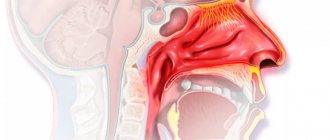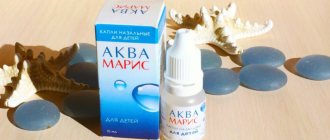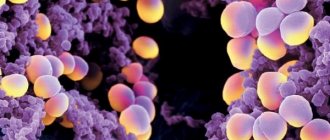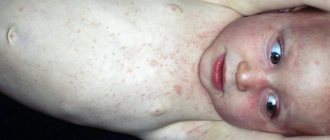Most often, pinworms occur in children, which is associated with underdeveloped immunity and great curiosity in understanding the world around them. Therefore, many parents have to deal with enterobiasis, despite the fact that they try in every possible way to protect their child from parasites. As a rule, pinworm infection occurs on the street, in kindergartens or even at school.
Pinworms are white roundworms that parasitize exclusively in the human body and cannot be transmitted to animals. Helminths grow up to 1-1.5 centimeters, have a slightly rounded shape and often come out at puberty to lay eggs in the folds of the skin, in the anal area.
Females are always larger than males, as they reproduce thousands and hundreds of thousands of eggs. If there are a lot of pinworms, they can lay eggs even in the intestines without coming out. But if the female comes out of the anus, it will cause itching at night, the child begins to itch, which leads to eggs getting under the nails, on the bed and underwear. If you do not wash your hands in a timely manner, the larvae are likely to re-enter the oral cavity, resulting in re-infestation.
The question immediately arises of how to treat worms at home, how effective it will be and, in general, how infection with this type of helminth occurs.
What are pinworms
From a biological point of view, pinworms are parasitic worms (synonyms: worms, helminths) that can reproduce in the intestines of children and adults.
In medicine, pinworms and some other types of worms (for example, roundworms) are called nematodes, which means “roundworms.” The condition of a person infected with pinworms is called Enterobiasis. The scientific name of pinworms is Enterobius vermicularis .
The life cycle of pinworms begins when an adult or child ingests the eggs of these parasites in food or water. In the human small intestine, pinworm eggs hatch into microscopic larvae, which begin to grow rapidly and develop into adults within 20 days.
Pinworms in children. Adult pinworms migrate from the small intestine to the large intestine, where they remain for the next 4-6 weeks. After this, the pinworms die. Pinworms feed on substances that are released in the human intestine during the digestion of food.
In order to lay eggs, adult female pinworms migrate to the rectal area and, emerging from the human anus (usually at night), lay 11,000 - 16,000 eggs on the skin. Pinworm eggs become infectious after 6-8 hours and remain viable for the next 3 weeks.
If a person touches the skin on which pinworm eggs are laid, they will stick to his fingers and get under his nails. Then, from the hands, the eggs can get into the mouth and again infect a person with a new generation of pinworms.
Pinworm eggs and larvae are very small and can only be seen under a microscope. An adult female pinworm can reach 8-13 mm in length. The male can be somewhat smaller in size: from 2 to 5 mm in length.
Adult pinworms are white. Quite often people wonder whether pinworms can be black in color? This answer can be answered as follows: pinworms and other types of worms are usually light (white) in color. If you notice black inclusions in your stool, these are most likely not worms.
Forms of existence of pinworms
Pinworms in children. The life cycle of a pinworm begins with the fertilization of the female in the intestine of the host, where its development occurs.
Female pinworms, filled with eggs in the amount of 5000-15000 each, are not able to stay on the intestinal mucosa; they descend to the rectum and crawl out of the anus to lay eggs in the perianal folds, on the skin of the buttocks and thighs, gluing them.
After laying eggs, the female pinworm dies; her lifespan does not exceed one month. For further development of pinworm eggs, a special microclimate is required with a temperature of 34-36 ° C and high humidity (70-90%). Suitable conditions for this are in the human perineum and perianal folds. There, pinworm eggs mature within 4-6 hours.
Once under the host's nails, pinworm eggs also receive optimal conditions for further development. After the eggs penetrate the gastrointestinal tract, pinworm larvae emerge from them and, on average, within 2 weeks they develop into adult pinworms, which parasitize the lower parts of the small and upper parts of the large intestine.
The lifespan of pinworms reaches 100 days, and the state of infestation, especially in children, due to repeated infections, can last much longer.
Treatment at home
Therapy for enterobiasis does not require the mother and child to be hospitalized. It is more convenient to be treated on an outpatient basis, at home. Only a pediatrician can prescribe anthelmintic drugs. Under no circumstances should you do this on your own.
Drugs
There are many medications for the treatment of enterobiasis. Some of them are very toxic, they are quite suitable for an adult, but are too strong for a baby. It is difficult to choose suspensions or tablets for infants. The most famous of them:
- Pyrantel;
- Nemocid;
- Piperazine;
- Vermox;
- Nemozol.
For children, rectal suppositories containing medications are very effective. They are popular with parents who do not want to torture their children with tablets and suspensions, although they are more expensive. It could be Nigella Sativa or Wormil.
Treating only a sick baby is not enough. The whole family must take anthelmintic medications, otherwise re-infection with pinworm eggs will certainly follow.
After completing the full course of treatment, it is necessary to take all the necessary tests again and, regardless of their results, repeat the course of anthelmintic treatment once again with the whole family.
Folk remedies
There are many folk remedies against helminths that have a good effect in the treatment of enterobiasis and children. Traditional medicine has knowledge, recipes and centuries of experience in this field.
Excellent remedies for pinworms are onions, garlic, lemon and pumpkin seeds. But it is better to use them not for small children, but for adults when they are undergoing a collective course of treatment for the whole family. Once in the lemon or garlic environment in the intestines, pinworms do not die immediately. But if you take these folk remedies in large quantities for several days in a row, then the pinworms gradually weaken and come out along with the feces.
Remember that folk remedies require a much longer treatment than modern drugs of official medicine, which can be done in a day. That is, the negative impact of pinworms on the child’s body will last longer.
Therapy with folk remedies does not exclude re-infection, and modern medicines can guarantee a complete cure. At the same time, it is recommended to wash the child with decoctions of medicinal chamomile or mint, which will relieve itching around the anus and have a soothing effect on the skin of the baby’s bottom.
Ways of transmission of pinworms in children
Pinworms in children. Enterobiasis is transmitted through household contact when a sick child spreads pinworm eggs in their environment on their hands and under their nails. They get there when children scratch the skin around the anus, irritated by a female helminth crawling out of the rectum.
Adult pinworms crawl out of the intestines late in the evening or at night to lay fertilized eggs in the skin folds around the anus. After scratching, a huge number of eggs remain on the skin of the hands and under the nails. Other family members can become infected this way if they do not observe basic hygiene skills.
A child suffering from enterobiasis is at risk of reinfestation by ingesting eggs laid by helminths living in his intestines.
This risk increases if infected children rarely wash their hands or have their underwear and bedding changed immediately after going to bed. By touching toys, household items, dishes and products, or pet hair, a child spreads pinworm eggs in his environment.
All family members, as well as members of the children's team where the child with enterobiasis is located, most often become infected in the shortest possible time. Through unwashed hands while eating, biting nails, sucking fingers or toys, pinworm eggs enter the mouth and then the intestines.
After 4 weeks in the intestines, the parasites become sexually mature pinworms and begin to lay eggs. If you scrupulously follow the recommendations for maintaining personal hygiene during the treatment of pinworms, self-infection of children can be stopped. An important condition is that all family members should be treated.
It is difficult to teach a preschool child to follow hygiene rules. For this reason, up to 5-6 years of age, it is extremely difficult for children attending children's groups to cure pinworms completely and without relapses.
Even if a child washes his hands often and does not have bad habits (nail biting, thumb sucking), he can become infected from his peers.
To interest children and teach them to wash their hands, various techniques are used: using soap with various inclusions or in the form of funny figures, colored soap foam, blowing soap bubbles, etc. Interesting games in the bathroom will help teach kids about hygiene.
Prevention
To prevent your child from becoming infected with pinworms, you need to follow several rules:
- cut your baby's nails short;
- iron your underwear on both sides;
- teach your child to wash their hands after using the toilet or going outside;
- avoid contact with sick children;
- Your baby's toys should be kept perfectly clean.
Do not forget that if a child has already become infected with parasites, then you need to be even more attentive to his personal hygiene. It is best to change your bed linen every day. It must be washed at the highest possible temperature and must be ironed. Also try to carry out wet cleaning frequently and clean the toilet every day. Teach your baby not to lick his fingers or pick up food that has fallen.
Do not forget to undergo a routine examination for enterobiasis annually, because this disease can often be asymptomatic.
If your child has been diagnosed with pinworms, it is not so scary. With the right approach to treatment, they can be quickly removed from the body using safe drugs or traditional medicine recipes. An enema helps well in the fight against intestinal parasites, since it acts directly on helminths.
Diagnosis of pinworms in children
Pinworms in children. The main method for diagnosing pinworms in children is scraping for the presence of helminth eggs in the skin folds around the anus. The time for scraping is the morning period before defecation; in this case, the child should not wash the anal area.
This method is not 100% accurate because pinworms do not lay eggs every day. However, on the day before which the child was bothered by itching at night, the test result will be accurate.
With a combination of symptoms such as: itching in the anus; abdominal pain; poor appetite; allergic manifestations; intestinal dysbiosis; increased level of eosinophils in blood tests - it is recommended to take scrapings three times, the first two - every other day, and the third - after 10 days. In this case, there is confidence in the reliability of the data obtained.
Even if pinworms are present in the child’s intestines, the test may be negative.
Analysis of feces for worm eggs is not informative, since the female lays them on the skin near the anus, and not in the intestines. Visually, you can detect an adult helminth in the feces or on the skin folds, similar to a piece of white thread measuring 0.5-1 cm. Its body has pointed ends on both sides.
Methods for collecting material for diagnostics: using adhesive tape, which is briefly pressed to the skin folds near the anus and then glued to the glass; using a cotton swab soaked in Vaseline. The second method is most often used. The material is examined on site or sent to the laboratory for microscopic examination in no more than 2 hours.
Signs of worm intoxication in a child’s body
In addition to reactions from the stomach, intestines and organs located near the site of invasion, children infected with any type of worms experience a number of neurological abnormalities, as well as reactions from the immune system.
They are due to the fact that all worms, during their life processes, secrete strong neurotoxins into the intestinal cavity (and therefore into the blood), which have the ability to suppress the immune system.
As the concentration of harmful substances in the child’s blood increases, the following progresses: headaches; slight increase in temperature; skin rash like urticaria; increased fatigue; aching pain in the joints; unfocused attention.
The relationship between enterobiasis (pinworms) in children and appendicitis has not been convincingly proven. But it is also true that among children infected with worms, the percentage of those with appendicitis is slightly higher.
The older the child, the less clearly the secondary signs of enterobiasis may be expressed - even just itching at night. The same applies to adult patients, who for years may not even suspect they have a helminthic infestation.
But in children under 5 years of age with enterobiasis, moodiness increases, appetite decreases, irritability develops, poor sleep, and cognitive skills decrease.
Which doctor can I contact?
Many parents, faced with a similar problem, do not know which doctor to contact. If you suspect enterobiasis, it is recommended to make an appointment with a pediatrician, he will conduct a study and select the correct treatment. You can also contact a gastroenterologist, who is a highly specialized specialist who specifically treats diseases associated with gastrointestinal disorders.
Pediatricians can refer parents and children to the right specialist, although in most cases they do an excellent job themselves.
General signs of worms in children
Pinworms in children. Many types of parasites for a long time do not contribute to the formation of an obvious clinical picture of helminosis: the goal of the parasite is to exist so as not to be noticed by the host carrier.
Therefore, clear symptoms of helminthiasis can be noted only in cases where there is multiple infection (initially or due to a long latent period) and/or the child has reduced immunity, there are concomitant diseases against which helminthiasis is more pronounced.
A separate situation is infection with exotic species of parasites that cause a sharp reaction in the body.
General signs of helminthiasis in children:
- increased appetite without weight gain;
- increased secretion of salivary fluid;
- manifestations of intestinal dyspepsia, flatulence, unstable stool, nausea, pain in the stomach, right hypochondrium, intestinal spasms;
- dizziness, headache, increased fatigue;
- a tendency to allergic reactions that have not been observed before, or more acute manifestations of allergies;
- sensitivity, irritability, sleep disturbances, attention, and memory are associated with intoxication by helminth waste products;
- fragility, hair loss, splitting of nails with the development of vitamin deficiency and iron deficiency;
- frequent inflammatory processes in the nasopharynx (sinusitis, sinusitis, pharyngitis, etc.), genitals, especially in girls due to the anatomical proximity of the vagina and anus.
With long-term helminthiases in children, there is a lag from age norms in height, weight, development, disturbances in the activity and diseases of the gastrointestinal tract, symptoms of severe intoxication, anemia, allergies, frequent respiratory diseases of bacterial and viral etiology, and neurological abnormalities.
Pinworms in children. The widespread belief that bruxism, grinding teeth in sleep, is a sign of the presence of worms in the body, has been refuted by medical scientists. The phenomenon of bruxism is associated with the characteristics of the human nervous system. Although helminths, especially pinworms, can disrupt sleep and contribute to a child's neuroticism, bruxism is not a confirmation of helminthic infestations. Neurologists and dentists treat this phenomenon.
The first symptoms, as a rule, appear 2-4 weeks after worm eggs enter the body. They vary depending on the number of parasites, the level of defenses and the state of health of the child, as well as the types of helminths. Thus, pinworms cause night itching in the anus, which contributes to sleep disturbances, as well as scratching of the anus in a child.
With toxacariasis, the hallmarks are a cough without signs of respiratory disease, a fever, possible attacks of suffocation and allergic reactions.
With prolonged helminthiasis, all people develop a clinical picture of intoxication of the body.
Symptoms
Pinworms are detected if the baby has at least one of the symptoms listed below:
- Unpleasant pain in the abdomen, localized in the navel area.
- Colic in part of the intestines, stool disorders.
- Difficulty falling asleep at night, nightmares at this time of day.
- Frequent occurrence of other viral diseases - ARVI, influenza.
- The occurrence of allergic and skin reactions - dermatitis, conjunctivitis.
- Regular presence of cough for no apparent reason, runny nose.
Children suffering from this disease experience serious disturbances during night sleep, even through dreams they begin to itch uncontrollably, which leads to complications of irritation.
Pinworms do not pose any particular harm to the baby’s health, but they can easily penetrate the liver and bile ducts, where they begin to provoke inflammatory processes and phenomena.
Females can penetrate the vaginal opening, as well as deep into the female genital organs. This provokes copious discharge in girls and young women and causes unpleasant itching.
Less frequently, but still, there have been cases of pinworms getting into the area of the lungs and nose, which entails the need for surgical intervention in the body.
Treatment of pinworms in children
Pinworms in children. You should not self-medicate - drugs that kill worms have many side effects. The correct dosage must be selected by the attending physician, so you should consult a pediatrician and allergist for advice.
Medicines are prescribed taking into account the weight and age of the baby. The doctor will tell you in detail about the rules of personal hygiene, because the cleanliness of your hands determines whether the treatment will be successful. There is no point in taking aggressive medications if parents will not monitor their child.
Pinworms will continue to parasitize the baby’s body even after taking medications. Cleanliness is the key to stopping the disease.
The medicine should be taken according to the instructions; usually it is recommended to take antihelminthic drugs in the morning. The diet during this period should be gentle, soft and not cause constipation.
Pinworms in children. Most often, doctors prescribe medications such as:
Albendazole: this drug comes in two forms: tablets and liquid suspension. It happens that the baby’s intestines are affected by several types of helminths at once, albendazole fights all of them in the best possible way.
Mebendazole: the drug has a wide spectrum of action. It should be taken once. A repeat course is carried out after 1-2 weeks. It is intended for children over two years of age.
Vermox: an effective and modern drug. Actively destroys parasites inside the intestines. The pediatrician will prescribe this drug according to the child's weight and age. This drug may cause many side effects such as diarrhea, vomiting and unbearable abdominal pain.
Piperazine: a new and safe medicine. Suitable even for babies. Use the drug for about 5 days. After a week's break, treatment is repeated. Then there is a week-long pass, after which the third course is drunk. It is worth considering that it is not recommended to use this remedy for treatment if the baby has kidney disease or diseases associated with neurology.
Pyrantel: the medicine can be used starting from six months of age. The course contains 3 tablets. The advantage of this drug is that all family members can be cured with its help.
Levamisole: a powerful drug that has proven itself in the medicinal market. Exterminates absolutely any parasites. The use of the drug is contraindicated if the child is under 3 years old. Levamisole quickly kills parasites.
Pinworms in children. Parents should be attentive to the cleanliness of the house; bedding must be thoroughly washed, preferably even boiled. Underwear should be changed every day, all items should be ironed.
Soft toys should be washed in a washing machine and dried in the sun. Plastic and rubber toys must be wiped with a soap and soda solution to destroy all larvae, otherwise the infection will occur again.
Need specialist help?
Inyutina Marina Arturovna – Oncologist, mammologist, surgeon, laser therapist. The main direction of work is the study of the parasitic theory of cancer. Selection of individual antiparasitic treatment regimens. Issues of parasitosis prevention.
Contacts:
- 89009681191 (WhatsApp, Telegram).
- Personal messages VK: write
Specialist Certificate
Interesting to know:
Treatment with folk remedies
Pinworms in children. There are modern medicines that are effective and safe. The child must be shown to a doctor and consulted with him. The following means are also popularly used.
- Garlic enemas are quite effective. For them, take a head of garlic (6-7 cloves) for 1.5 liters of water. Pour the product and leave for 8 hours, then use the resulting water to do enemas twice a day for 5-6 days.
- Carrot milk. Boil finely grated carrots in a liter of milk, let the mixture simmer for half an hour. Then cool what happened and let the child drink the drink every day for four days. A single dose is about a glass, this medicine should be taken on an empty stomach, at least an hour before meals. This remedy should not be given to children under three years of age, since they will not be able to drink the required amount of carrot milk, and smaller doses will be less effective.
- Parasites also do not like sauerkraut brine Cabbage must be fermented no later than 30 days ago, only in this case its brine will have maximum healing properties. It can be given from the age of seven, half a glass twice a day after meals. This needs to be done throughout the week.
- Pumpkin seeds. Treatment with their help should not be carried out on small children; this method is more suitable for children aged 12 years and older. You need to give your child about a hundred peeled seeds in the morning on an empty stomach. Forty minutes after the child eats them, he is given any age-appropriate laxative. The worms will come out almost in full, but to be sure, it is better to repeat eating pumpkin seeds in the same amount exactly one week later.
- Warm sitz baths. Pinworms love a warm environment, so it would be a shame not to take advantage of it. Give your child a sitz bath before bed at night, soaking only your baby's bottom in it. The parasites will definitely head towards the heat source and exit the rectum into the water. You will be able to see them at the bottom of the basin when the water is poured out. The duration of this procedure is just over a quarter of an hour. Then the child's anus should be washed with soap. Sitz baths should be done throughout the week. The disadvantage of this treatment is the lack of confidence that all the pinworms have come out. If at least a few individuals remain, enterobiasis will begin again.
- Herbal enemas. To prepare such a procedure, you will need pharmacy preparations of wormwood and celandine. 50 gr. Mix each raw material and pour in 0.5 liters of warm boiled water. Let it stand for about half an hour, then put it on the fire and boil for three minutes, then strain the broth and cool. Do enemas exclusively with warm broth (warm up as needed) for a week and a half. An important detail is that the procedure must be carried out immediately after defecation.
- Saline enemas. A teaspoon of salt per glass of boiled water - these are the proportions of the solution for washing the rectum. The procedure should be repeated up to 4 times a day for two days. The process is not pleasant, so you should not give such an enema to too young children, especially newborns and infants. Pinworms die from salt; the body will remove them during bowel movements.
- Tar soap. This hygiene product does not have a pleasant smell, but has great health value. Eliminating the problem of pinworms with its help takes a long time (about a month and a half), but is very effective. It is enough to simply wash your child twice a day with this soap and change his underwear after each procedure. Due to its prolonged action, tar soap is best used for prevention.
Complications of pinworms in children
Pinworms in children. If you do not start timely treatment of enterobiasis, the child’s body does not receive enough vitamins, microelements, and nutrients that it needs for full development.
In return, colonies of pinworms fill it with toxins and provoke allergies. In an exhausted body with prolonged invasion, the level of immunity is significantly reduced.
Pinworms in children. Complications of enterobiasis in children:
- eosinophilic enterocolitis - intestinal damage, appears with high sensitivity to pinworm antigens, with massive helminthiasis;
- salpingitis and oophoritis - inflammation of the ovaries and fallopian tubes when pinworms penetrate the genitals;
- appendicitis – an inflammatory process due to the accumulation of pinworms in the cecum;
- vulvovaginitis - inflammation of the vagina when pinworms penetrate the genitourinary system;
- peritonitis - inflammation of the peritoneum when parasites penetrate the intestinal walls;
- inflammation of the foreskin in boys when parasites penetrate under it;
- increased risk of allergization of the child’s body;
- increased risk of masturbation, balanitis, leukorrhea due to excessive irritation of the genitals by pinworms;
- Children with a weak type of nervous system develop neurological abnormalities, increased irritability, and may develop seizures similar to epileptoid seizures.
In addition to everything, children with long-term infestation are often underweight and retarded in physical and mental development.











